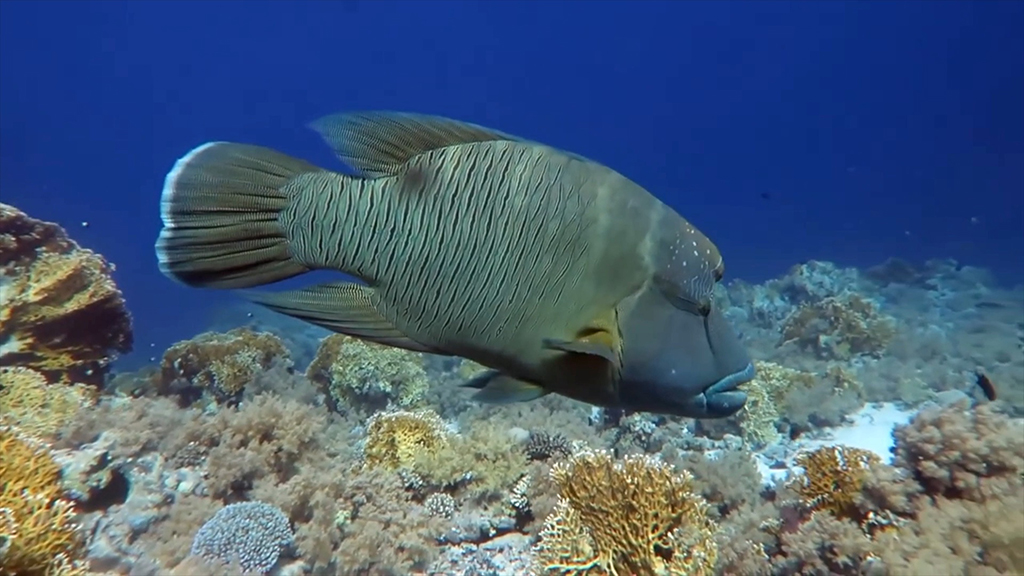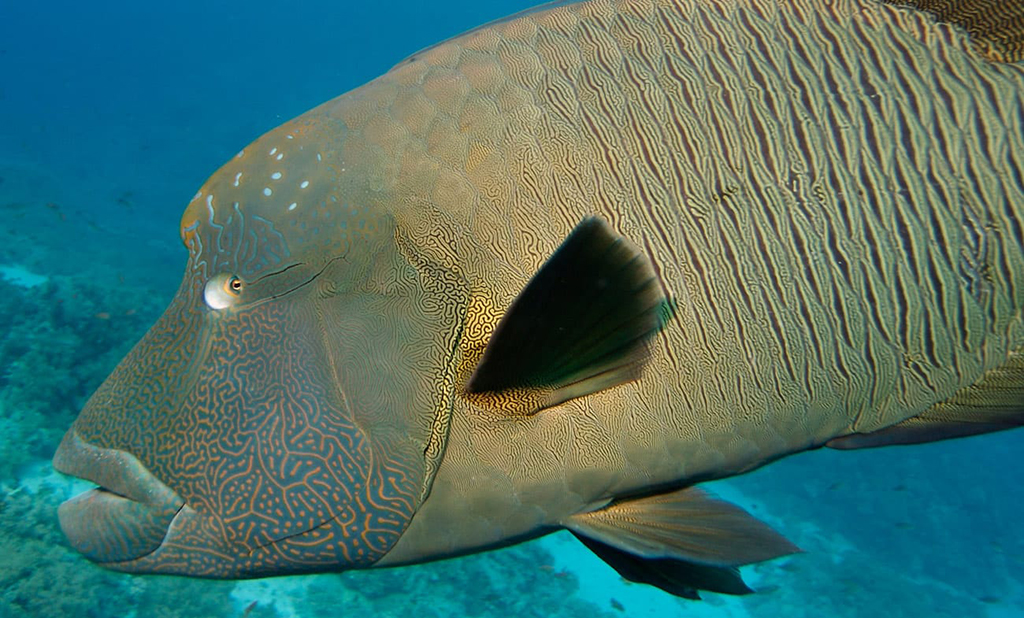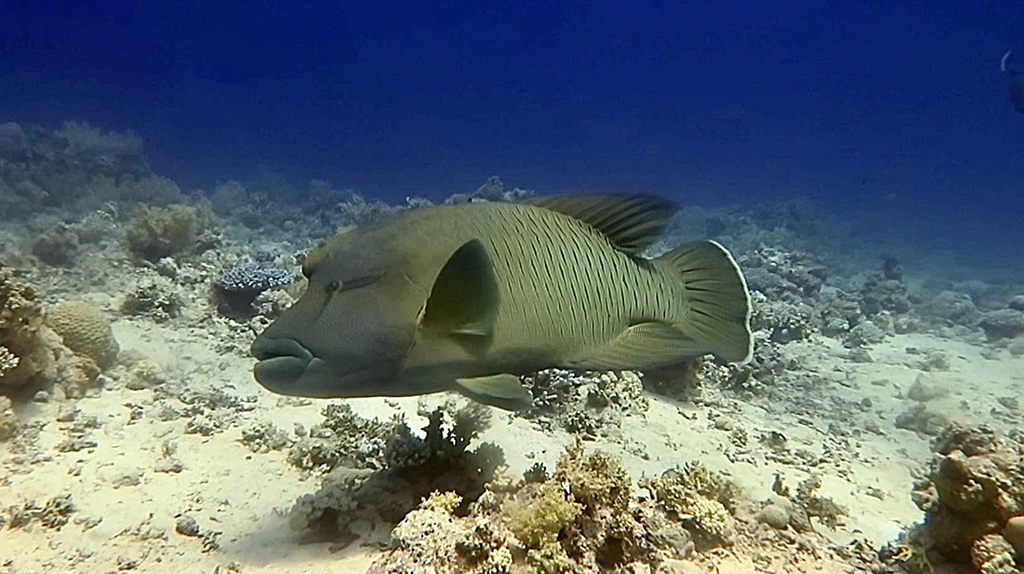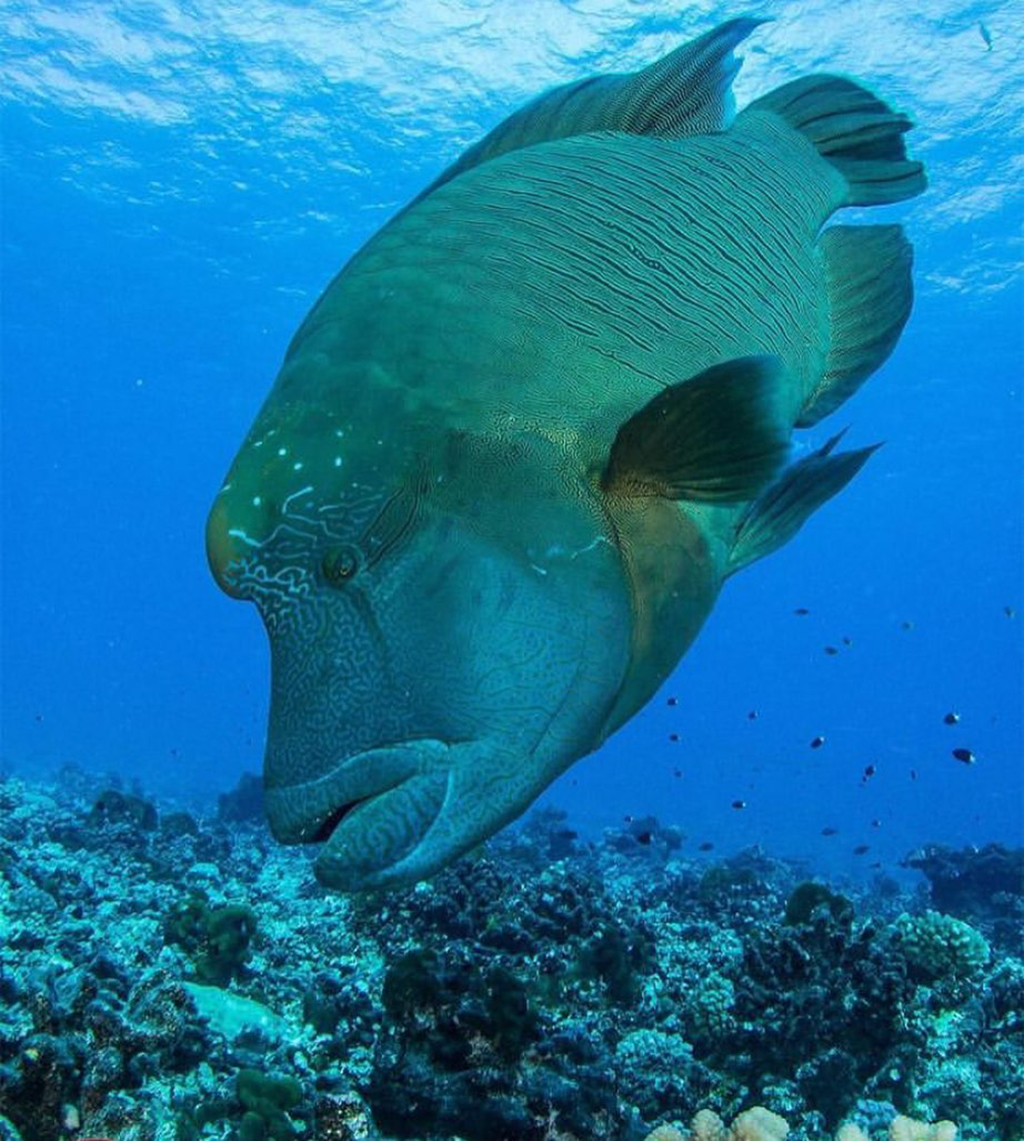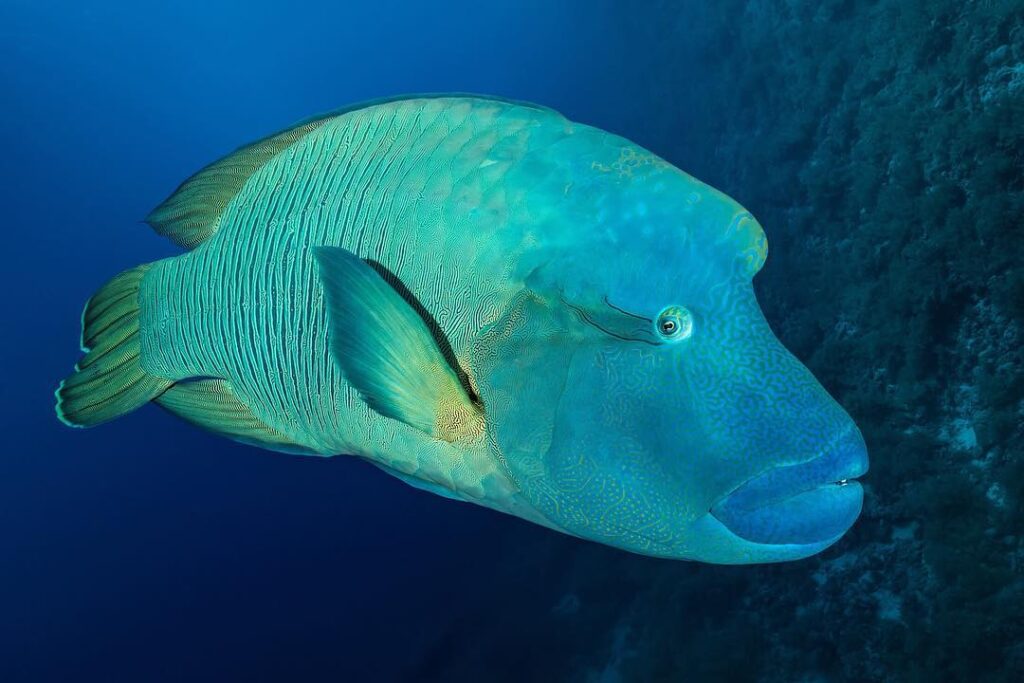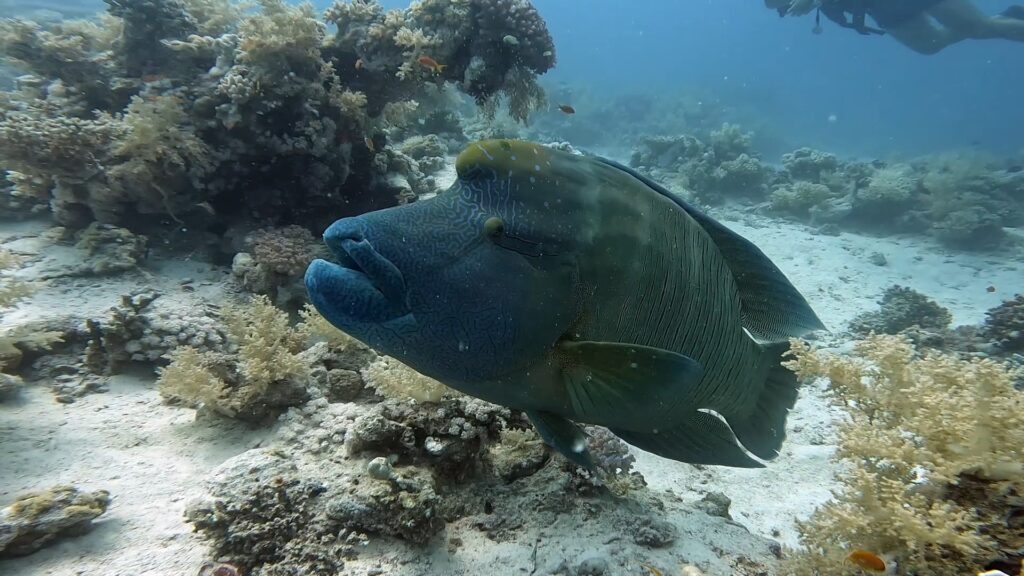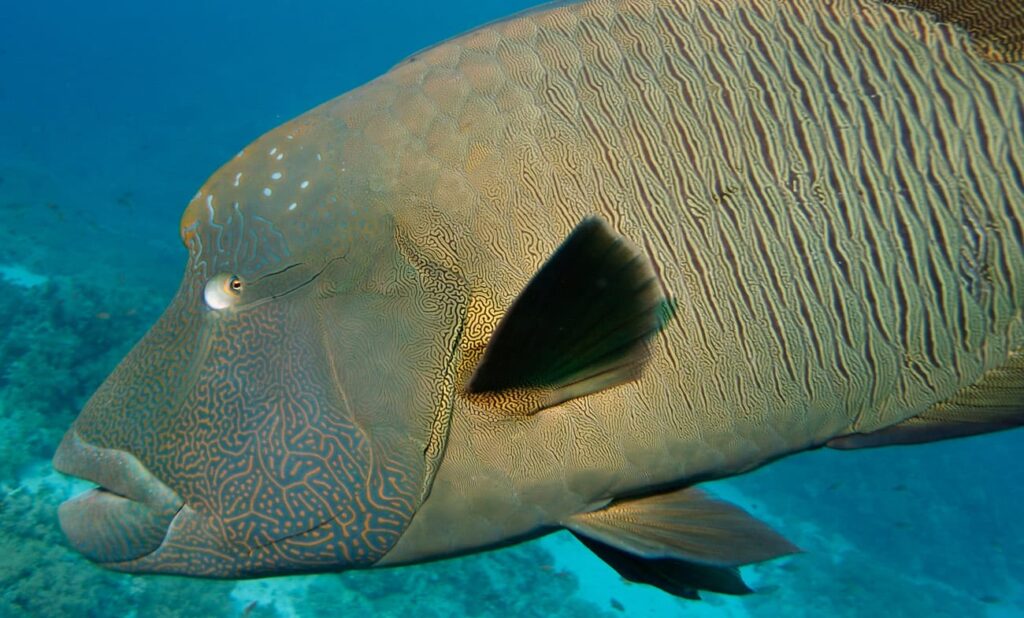Napoleon Fish
Anyone could simply think that this is another simply funky fish. But the napoleon is actually a unique and special fish!
Napoleon is a large fish. Males, typically larger than females, are capable of reaching up to 2 meters and weighing up to 180 kg, but the average length is a little less than 1 meter. Females rarely grow larger than one meter. This species can be easily identified by its large size, thick lips, two black lines behind its eyes, and the hump on the foreheads of larger adults. The bump on its head can grow to six feet long, and weigh up to 400 pounds.
First of all, they can change gender! Very, and I mean VERY few fish can do that. Napoleons can only change from female to male and they unlock this ability when they turn about 5-8 years old.
Napoleon fish have a 30-50 year lifespan, which dosen’t only mean that a lot of their life is as a male, but also that they have a very long life for a fish! The really cool thing is that they have a choice! Female Napoleons seem to only turn into males when there’s a shortage of males! If you want to recognize which gender a napoleon is them remember that females have a red-orange color while males have a deep blue-green color. Note about females is that red and orange aren’t easily identified in the blue water, so pay close attention!
Also, a fact that not a lot of people know is that their eyes can rotate 360 degrees. Yes, you read that right. Each eye can rotate to look forwards, backwards, up, and down. Independently. Much like a chameleon. They are constantly moving, always swiveling around to observe their surroundings. One eye can be looking forward and the other backward. What a lucky fish.
The Napoleon wrasse is one of the few fish able to eat toxic animals such as boxfish, sea hares, and crown of thorns starfish. For this reason, Napoleons play a key part in the marine food chain in order to maintain a balanced and healthy coral reef. Napoleon spends most of their time feeding during the day. Adults are usually solitary, spending the day roaming the reef and returning to particular caves or ledges to rest at night.
They are not only very photogenic but also very friendly, a great combination. It makes it very easy to photograph its beauty!


